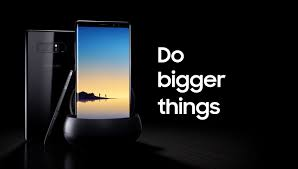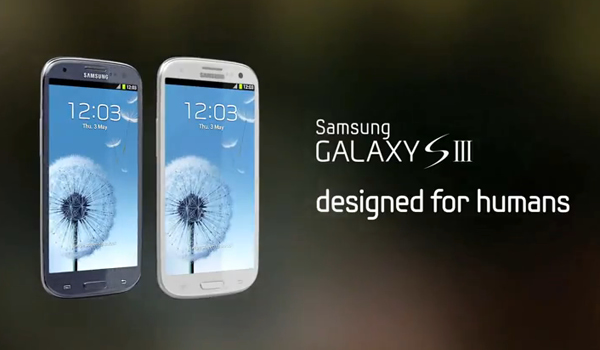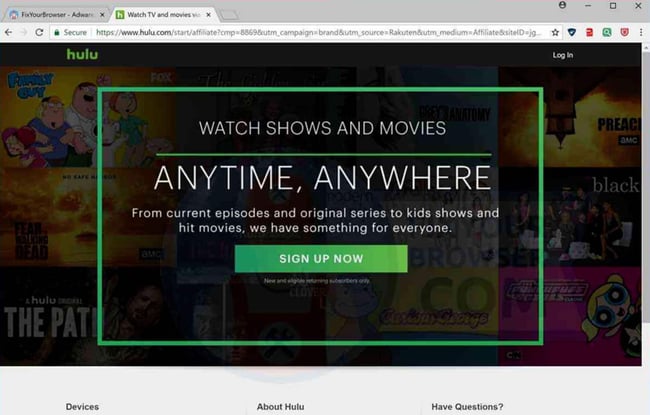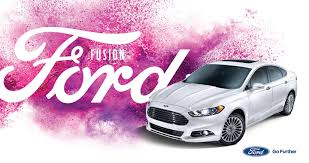If you're a fan of HubSpot's Inbound Marketing Methodology, you probably understand the importance of customer success. In fact, 70% of businesses with growing revenue prioritize customer success as "very important." So, if you want your business to succeed you must make sure your customers do, too.
By doing so, you can stack the odds in your favor, ensuring the leads you’re passing to your sales team are a good fit for your business through benefit segmentation. In this post, we'll go over what benefit segmentation is, why you should use it, and where it can be seen in the real world.
Why should you do benefit segmentation?
Benefit segmentation will help you gain a better understanding of the different needs of your customer base in addition to the following:
1. Benefit segmentation makes it easier for sales reps to convert leads into customers.
That's because your marketing campaigns will attract customers who are better suited for your product or service. Since the campaigns are targeted to the people who need your business the most, your sales team should have an easier time closing deals.
2. Marketers and salespeople can use benefit segmentation to engage customers.
By identifying the key value that your business provides, your team will create more compelling marketing campaigns and sales pitches. They'll know exactly how to differentiate your product or service to make it attractive to your target audience.
3. Benefit segmentation improves customer retention.
Converting leads that are a good fit for your organization will decrease your churn rate over time. Customers will be happy your product or service is fulfilling their needs and will be less likely to shop with your competitors.
Now that we understand what benefit segmentation is and why you should use it, let's take a look at some real examples where this marketing technique helped businesses attract and close leads.
Benefit Segmentation Examples
1. Samsung

The cell phone has become one of the most fundamental products of modern technology. Almost everyone has a cell phone to get them through their day-to-day tasks. But, depending on who you are, how old you are, and where you're from, your cell phone needs may differ dramatically from the next customer. Most of us need a cell phone, but often for a different reason. So, how do phone companies manage to fulfill these customer needs?
Samsung uses benefit segmentation to personalize ads for different target audiences. In the cell phone industry, age is a major determining factor of customer needs. As customers get older, what they need from their cell phone changes. It goes from fun features like cameras and apps to more practical benefits like battery life and security.
We can see this play out in the two advertisements pictured. The first one is aimed at a youthful audience and inspires them to "Do bigger things." The phone comes with two cameras and lets the user draw on images using the included stylist.

Compare this to the next ad where Samsung focuses on the practicality of the phone. Its tagline, "Designed for humans," lets the reader know the phone is user-friendly and easy to set up. The phone is designed for optimal performance so that it never slows down no matter how many apps are running at once. This is particularly useful for an audience that may have a busy professional schedule and is working on multiple tasks at once.
Highlights:
- Samsung used it’s “Do bigger things” campaign to attract a younger audience by reeling them in with sleek new camera features.
- Conversely, the company was able to attract older users who may not be as tech or gear savvy with the tagline “Designed for humans,” implying the phone is user-friendly for all.
2. Ford
Car companies often use benefit segmentation to position different types of vehicles. For example, we can look at Ford to see the difference in advertisement between its Ford Fusion and F-150 models.
The Ford Fusion is a practical, four-door sedan that's described as "sophisticated" and "cool." Ford recognizes that people who are interested in this car will value its style in addition to its performance and price. The company highlights this by using vibrant colors in its advertisement to compliment the car's eye-popping design.
Now, compare that image to the image of the Ford F-150 below. The F-150 is a work truck designed for people who need a powerful, durable vehicle. Customers who are interested in the F-150 would value the truck's impressive towing capacity and ability to navigate difficult terrain. That's why the image below shows the truck towing a large piece of equipment with a tagline of "Built Ford Tough."

Highlights:
- Ford marketed the Fusion sedan to users who were more interested in having a practical, but stylish car to get around town.
- For the F-150, Ford used it’s “Built Ford Tough” campaign featuring the rugged outdoors to attract buyers looking for a durable, all-terrain truck that could handle the toughest jobs.
3. Airbnb

Airbnb's market segmentation is interesting because it has to account for two main target audiences: hosts and guests. Not only does the company have to find customers to book the rooms, but they must also attract welcoming hosts with desirable living spaces. This forces Airbnb to perform benefit segmentation to create ads that appeal to both guests and hosts.
In the example above, we can see how Airbnb uses benefit segmentation to attract hosts in New York City. New Yorkers have a lot of pride for their city and value companies sharing that passion. So, Airbnb created these subway ads to educate New Yorkers on why Airbnb is good for local business owners as well as community development.
We can compare that educational message to the inspirational one below. This ad is aimed at potential guests who are planning a future trip but haven't made concrete travel plans. Airbnb capitalizes on this opportunity by creating a message that embraces uncertainty. Rather than pointing to a specific location, Airbnb makes the destination irrelevant and instead focuses on how the company will help, no matter where you go. This makes Airbnb look more trustworthy to customers who may be nervous about making a major financial decision.

Highlights:
- To attract NYC hosts to use their service, Airbnb embarked on a campaign that tapped into the pride New Yorkers have for their city and local businesses.
- For guests, Airbnb established themselves as a trustworthy accommodation option – no matter where they decided to crash – by using the uncertainty of the audience’s destination to their advantage.
4. Nike

Nike offers a wide range of products to a variety of target audiences. It needs to use benefit segmentation to develop different marketing campaigns that appeal to each group of customers. The most notable example we can pull from Nike is its ads featuring tennis superstar, Serena Williams.
These ads are aimed at Nike's female target audience, particularly at its youthful demographic. Nike understands that these customers value the athletic confidence they experience when wearing Nike products. That's because Nike's apparel is not only stylish but designed for elite performance. The company uses the tennis phenom, Serena Williams, as an icon to demonstrate how this added confidence can improve your athletic ability.
Highlights:
- Nike expertly leveraged it’s reputation for creating high-performance gear by using tennis star Serena Williams.
- Additionally the brand was able to tap into youthful nostalgia and appeal to female buyers by using images of Williams as a youth to inspire their audience to greatness.
5. Hulu

Amidst the "cord-cutting" phenomenon, Hulu has been able to position itself as a viable alternative to cable TV. Hulu's users value convenience and efficiency and don't want to spend money paying for television channels they never watch. So, the company has created an ad campaign that explains how Hulu users can save money while maintaining access to their favorite content.
In the ad above, we see how benefit segmentation influenced Hulu's marketing campaign. For example, the copy highlights how users can view "current episodes" and "hit movies." Since many cord-cutters worry about losing access to new content, this lets users know that Hulu's content is updated so they'll never miss a recent episode. That's incredibly important for people who follow series like Game of Thrones, where it's vital to watch the episode as soon as it airs.
Highlights:
- Hulu’s ad campaign assures potential cord-cutters they won’t miss current episodes of their favorite shows.
- Hulu found what was most important to their customers (missing their favorite shows) and then tailored their messaging to address their needs.
The Advantage of Using Benefit Segmentation
With benefit segmentation, you can organize your customers and leads based on the value you provide them. This ensures you're attracting customers who will develop a strong relationship with your business over time. <>By pursuing these customers, your organization will improve lead acquisition and ensure customer success.
This article was originally published June 3, 2019 and has been updated for comprehensiveness.
from Marketing https://blog.hubspot.com/marketing/benefit-segmentation
If you're a fan of HubSpot's Inbound Marketing Methodology, you probably understand the importance of customer success. In fact, 70% of businesses with growing revenue prioritize customer success as "very important." So, if you want your business to succeed you must make sure your customers do, too.
By doing so, you can stack the odds in your favor, ensuring the leads you’re passing to your sales team are a good fit for your business through benefit segmentation. In this post, we'll go over what benefit segmentation is, why you should use it, and where it can be seen in the real world.
Why should you do benefit segmentation?
Benefit segmentation will help you gain a better understanding of the different needs of your customer base in addition to the following:
1. Benefit segmentation makes it easier for sales reps to convert leads into customers.
That's because your marketing campaigns will attract customers who are better suited for your product or service. Since the campaigns are targeted to the people who need your business the most, your sales team should have an easier time closing deals.
2. Marketers and salespeople can use benefit segmentation to engage customers.
By identifying the key value that your business provides, your team will create more compelling marketing campaigns and sales pitches. They'll know exactly how to differentiate your product or service to make it attractive to your target audience.
3. Benefit segmentation improves customer retention.
Converting leads that are a good fit for your organization will decrease your churn rate over time. Customers will be happy your product or service is fulfilling their needs and will be less likely to shop with your competitors.
Now that we understand what benefit segmentation is and why you should use it, let's take a look at some real examples where this marketing technique helped businesses attract and close leads.
Benefit Segmentation Examples
1. Samsung

The cell phone has become one of the most fundamental products of modern technology. Almost everyone has a cell phone to get them through their day-to-day tasks. But, depending on who you are, how old you are, and where you're from, your cell phone needs may differ dramatically from the next customer. Most of us need a cell phone, but often for a different reason. So, how do phone companies manage to fulfill these customer needs?
Samsung uses benefit segmentation to personalize ads for different target audiences. In the cell phone industry, age is a major determining factor of customer needs. As customers get older, what they need from their cell phone changes. It goes from fun features like cameras and apps to more practical benefits like battery life and security.
We can see this play out in the two advertisements pictured. The first one is aimed at a youthful audience and inspires them to "Do bigger things." The phone comes with two cameras and lets the user draw on images using the included stylist.

Compare this to the next ad where Samsung focuses on the practicality of the phone. Its tagline, "Designed for humans," lets the reader know the phone is user-friendly and easy to set up. The phone is designed for optimal performance so that it never slows down no matter how many apps are running at once. This is particularly useful for an audience that may have a busy professional schedule and is working on multiple tasks at once.
Highlights:
- Samsung used it’s “Do bigger things” campaign to attract a younger audience by reeling them in with sleek new camera features.
- Conversely, the company was able to attract older users who may not be as tech or gear savvy with the tagline “Designed for humans,” implying the phone is user-friendly for all.
2. Ford
Car companies often use benefit segmentation to position different types of vehicles. For example, we can look at Ford to see the difference in advertisement between its Ford Fusion and F-150 models.
The Ford Fusion is a practical, four-door sedan that's described as "sophisticated" and "cool." Ford recognizes that people who are interested in this car will value its style in addition to its performance and price. The company highlights this by using vibrant colors in its advertisement to compliment the car's eye-popping design.
Now, compare that image to the image of the Ford F-150 below. The F-150 is a work truck designed for people who need a powerful, durable vehicle. Customers who are interested in the F-150 would value the truck's impressive towing capacity and ability to navigate difficult terrain. That's why the image below shows the truck towing a large piece of equipment with a tagline of "Built Ford Tough."

Highlights:
- Ford marketed the Fusion sedan to users who were more interested in having a practical, but stylish car to get around town.
- For the F-150, Ford used it’s “Built Ford Tough” campaign featuring the rugged outdoors to attract buyers looking for a durable, all-terrain truck that could handle the toughest jobs.
3. Airbnb

Airbnb's market segmentation is interesting because it has to account for two main target audiences: hosts and guests. Not only does the company have to find customers to book the rooms, but they must also attract welcoming hosts with desirable living spaces. This forces Airbnb to perform benefit segmentation to create ads that appeal to both guests and hosts.
In the example above, we can see how Airbnb uses benefit segmentation to attract hosts in New York City. New Yorkers have a lot of pride for their city and value companies sharing that passion. So, Airbnb created these subway ads to educate New Yorkers on why Airbnb is good for local business owners as well as community development.
We can compare that educational message to the inspirational one below. This ad is aimed at potential guests who are planning a future trip but haven't made concrete travel plans. Airbnb capitalizes on this opportunity by creating a message that embraces uncertainty. Rather than pointing to a specific location, Airbnb makes the destination irrelevant and instead focuses on how the company will help, no matter where you go. This makes Airbnb look more trustworthy to customers who may be nervous about making a major financial decision.

Highlights:
- To attract NYC hosts to use their service, Airbnb embarked on a campaign that tapped into the pride New Yorkers have for their city and local businesses.
- For guests, Airbnb established themselves as a trustworthy accommodation option – no matter where they decided to crash – by using the uncertainty of the audience’s destination to their advantage.
4. Nike

Nike offers a wide range of products to a variety of target audiences. It needs to use benefit segmentation to develop different marketing campaigns that appeal to each group of customers. The most notable example we can pull from Nike is its ads featuring tennis superstar, Serena Williams.
These ads are aimed at Nike's female target audience, particularly at its youthful demographic. Nike understands that these customers value the athletic confidence they experience when wearing Nike products. That's because Nike's apparel is not only stylish but designed for elite performance. The company uses the tennis phenom, Serena Williams, as an icon to demonstrate how this added confidence can improve your athletic ability.
Highlights:
- Nike expertly leveraged it’s reputation for creating high-performance gear by using tennis star Serena Williams.
- Additionally the brand was able to tap into youthful nostalgia and appeal to female buyers by using images of Williams as a youth to inspire their audience to greatness.
5. Hulu

Amidst the "cord-cutting" phenomenon, Hulu has been able to position itself as a viable alternative to cable TV. Hulu's users value convenience and efficiency and don't want to spend money paying for television channels they never watch. So, the company has created an ad campaign that explains how Hulu users can save money while maintaining access to their favorite content.
In the ad above, we see how benefit segmentation influenced Hulu's marketing campaign. For example, the copy highlights how users can view "current episodes" and "hit movies." Since many cord-cutters worry about losing access to new content, this lets users know that Hulu's content is updated so they'll never miss a recent episode. That's incredibly important for people who follow series like Game of Thrones, where it's vital to watch the episode as soon as it airs.
Highlights:
- Hulu’s ad campaign assures potential cord-cutters they won’t miss current episodes of their favorite shows.
- Hulu found what was most important to their customers (missing their favorite shows) and then tailored their messaging to address their needs.
The Advantage of Using Benefit Segmentation
With benefit segmentation, you can organize your customers and leads based on the value you provide them. This ensures you're attracting customers who will develop a strong relationship with your business over time. <>By pursuing these customers, your organization will improve lead acquisition and ensure customer success.
This article was originally published June 3, 2019 and has been updated for comprehensiveness.



No hay comentarios:
Publicar un comentario